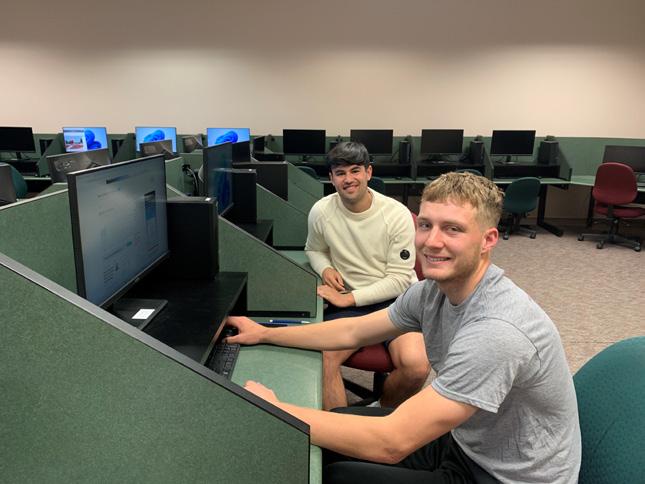
4 minute read
Students Gain Real-world Financial Experience Managing $1 Million of College’s Endowment
Since 2011, students in McPherson College’s Investment class have gained real-world financial experience managing a portion of the college’s endowment. What started as a modest $100,000 portfolio has grown to approximately $600,000, and in March, the Board of Trustees approved a motion to expand the students’ portfolio to manage $1 million.
“It’s a vote of confidence in what we do and trust in the class that Rod Gieselman built during his tenure on the business faculty,” said Duke Rogers, associate professor of business, who teaches the course.
The investment class is offered each spring and is required for business majors with a focus on finance; however, even students not majoring in finance want to take this course. That was the case for Andy Skinner ’12. Skinner started as a pre-med major, but after three years, he decided to look at other options and added a business administration minor to his biochemistry major. He took the investment class in the last semester of his senior year and was part of the first class to manage a portion of the college’s endowment.
Managing real money with real consequences drove his excitement about investing, and today, Skinner is a certified financial planner and a member of the McPherson College Board of Trustees, serving on the financial a airs committee.
“For me, the class was the spark that led me to my future career,” Skinner said. “It was exciting to see it come full circle for me.”
Two students made a presentation to the financial a airs committee, walking it through the process and structure of the class and the portfolio’s performance. At the end of the presentation, the students asked for more money to invest.
“It was exciting to hear the students’ presentation,” Skinner said. “In the end, we decided to give them more money because they’d done a really good job. It’s proof that following long-term investment strategies pays o . I remember the stocks my class recommended, and they were still in the presentation. I still track them myself occasionally.”
The idea for students to manage “real” money was initially supported by Craig Holman and Jim Dodson, who served on the business advisory board at the time, said Rod Gieselman, former business professor who was instrumental in developing the class and its success.
Gieselman's goal for the class was for students to learn the importance of long-term investing and staying patient.
“My favorite part of the class is the real-life aspect of managing money for the college that actually makes an impact,” said Fabio Nickel. Nickel, a senior business administration major from Cologne, West Germany, was one of the students who presented the class portfolio to the financial a airs committee. “Another takeaway from the class is the personal confidence I gained in dealing with stocks. I can see myself doing this as a job, and I have the confidence to invest personally without an advisor.”
There are approximately 30 stocks that are assigned to students who do research and make recommendations to the entire class. All students in the class vote on whether to buy, sell, or hold in May each year.
“The class gives you a glimpse of what real-life investing is like,” said the other student-presenter, Owen Braxmeyer, a senior business administration accounting and finance major from Manhattan, Kan. “I value that we work with real money; everyone takes it very seriously. It’s also something that the college cares about. The college cares about the success of the students.”
Every stock has a binder passed down to the next class of students. The students have maintained an 11% average annual return on par with professional investors and the S&P 500. And, like any other investment profession, they also earn a modest fee that supports the Business Club activities like trips and the annual protocol dinner.
“The students have always understood that if we aren’t successful, we can be fired just like any other investment professional,” Gieselman said. “It adds seriousness and takes the class to a different level. They understand that this is real money, not a simulation.”




